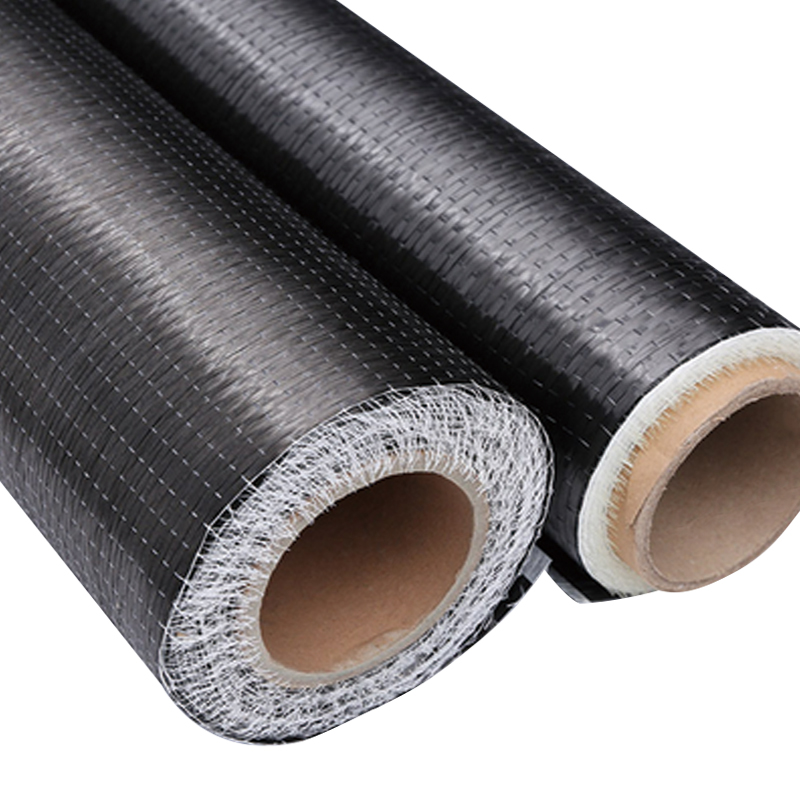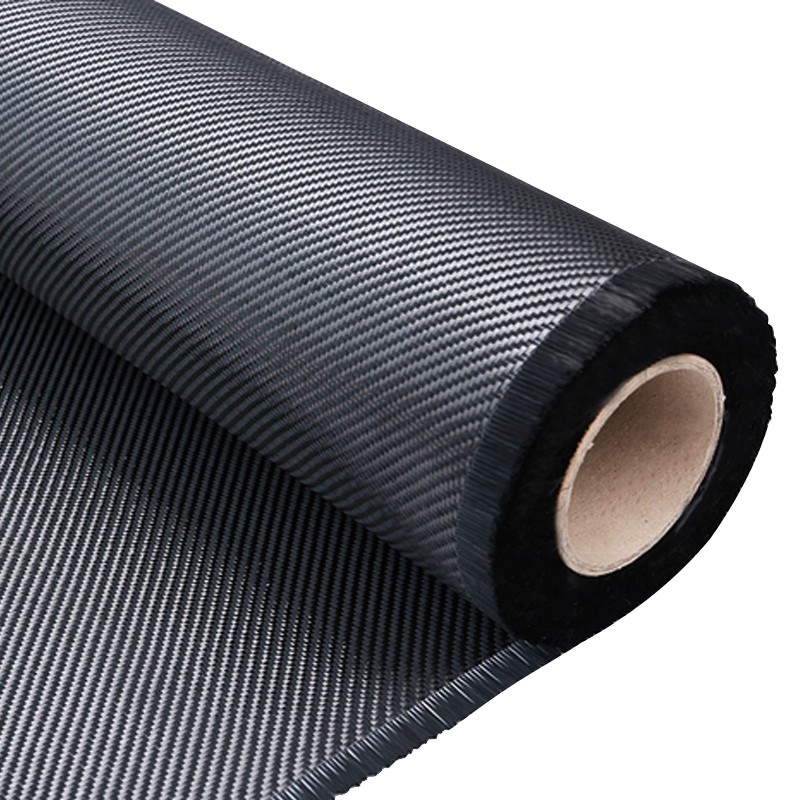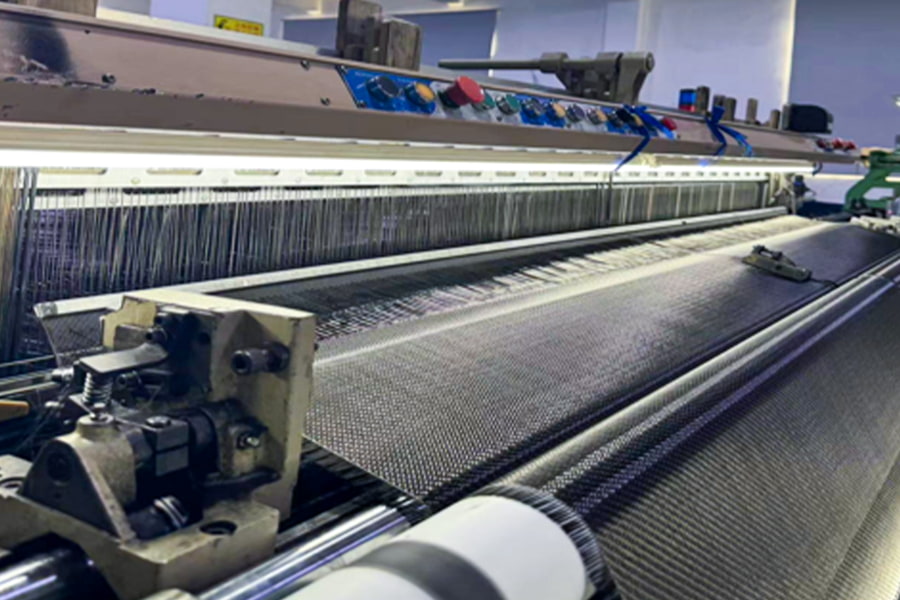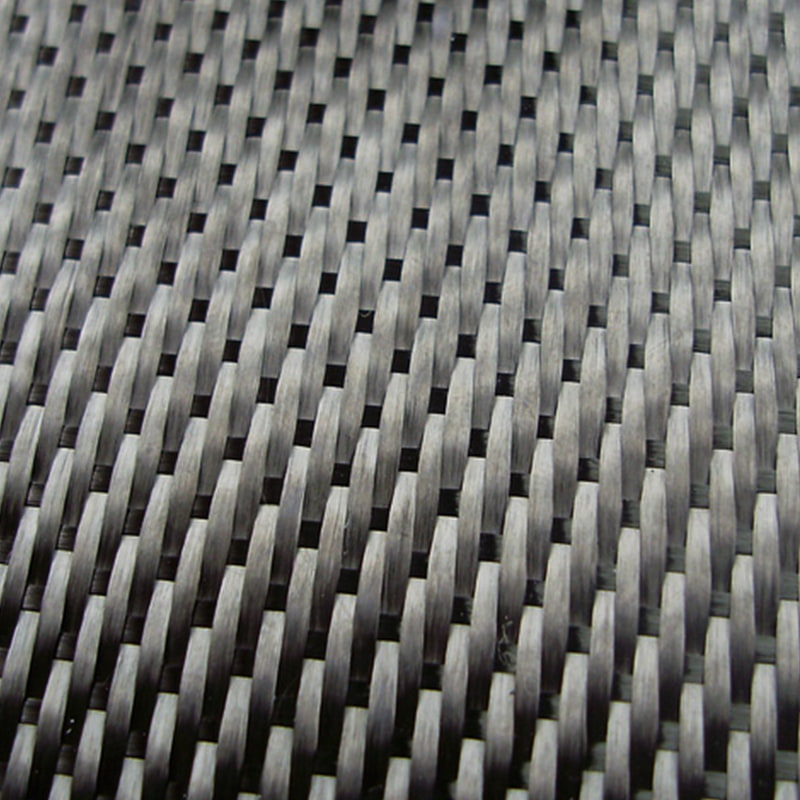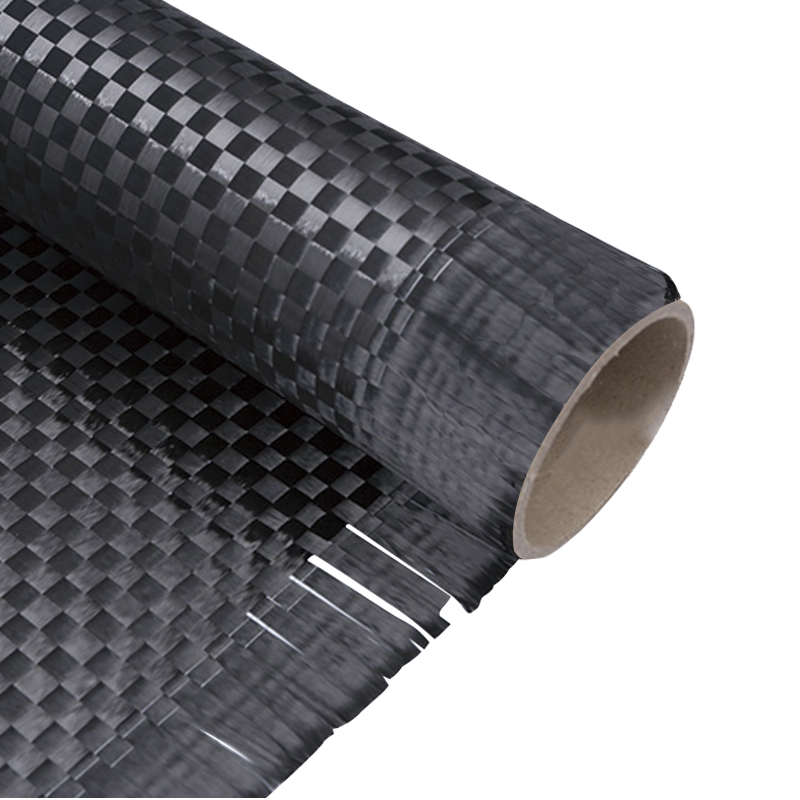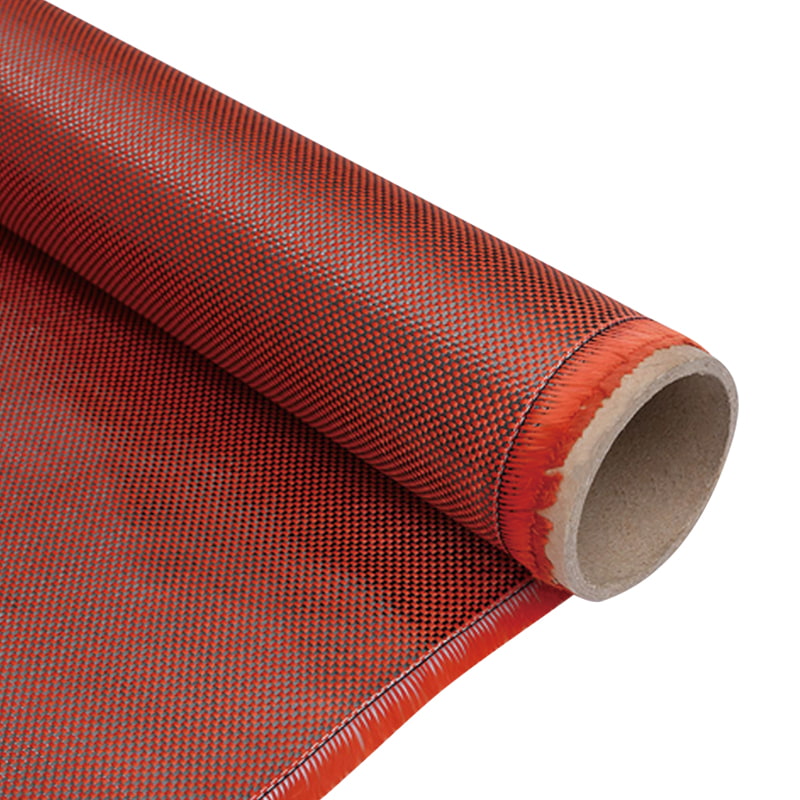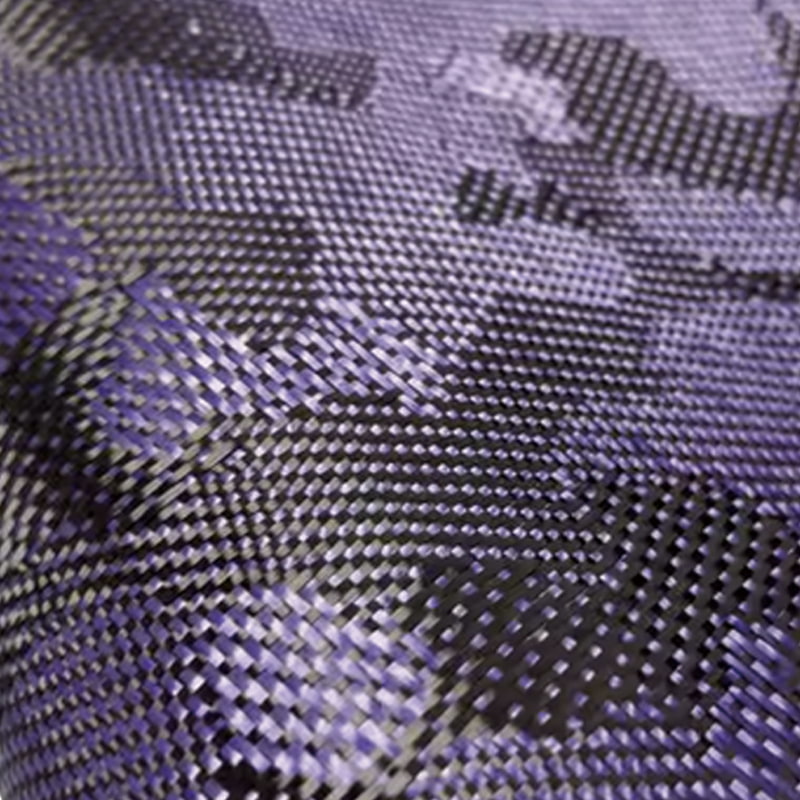On the stage of modern materials science, a material as light as a feather yet as strong as a rock is leading a revolution. It is Carbon Fiber Cloth. This black fabric, composed of pure carbon elements, has unique physical and chemical properties that make it an indispensable cornerstone in various fields such as aerospace, automotive, and sports equipment. Its rise is not just a technological breakthrough but also a powerful challenge to traditional metal materials.
So, what exactly makes Carbon Fiber Cloth so special?
The Essence of Carbon Fiber Material
To understand the excellence of Carbon Fiber Cloth, you must first delve into its essence: carbon fiber. Carbon fiber is a special fiber composed of carbon elements, and its structure and properties determine the quality of the final composite material. Its birth was not accidental, but a result of the relentless pursuit of ultimate material performance.
From Precursor to Carbon Fiber
The manufacturing process of carbon fiber is a complex and rigorous chemical and physical transformation. It starts with an organic polymer called a "precursor," with polyacrylonitrile (PAN) being the most commonly used. This process can be divided into several key stages:
- Pre-oxidation: The PAN fibers are heated in the air at about 200-300°C. During this process, the linear molecular chains in the fibers cross-link, forming a more stable ring structure.
- Carbonization: This is the core step. The pre-oxidized fibers are sent to a high-temperature furnace and heated in an inert gas environment at over 1000°C. In this stage, all non-carbon atoms (such as hydrogen, nitrogen, and oxygen) are removed, leaving behind almost pure carbon atoms.
- Graphitization: For carbon fibers that require higher stiffness, they are further graphitized at temperatures of 2000°C or higher. This aligns the carbon atoms into a more ordered graphite crystal structure, significantly increasing their elastic modulus.
Finally, the single carbon fibers processed through these steps are extremely thin, usually only 5-10 micrometers, thinner than a strand of hair. Thousands of these single filaments are bundled into a "carbon fiber tow," which is then woven into the familiar Carbon Fiber Cloth.
The Structure and Properties of Carbon Fiber
The microstructure of carbon fiber is the source of its powerful properties. During the carbonization process, carbon atoms form tiny graphite crystals that are aligned along the fiber axis. This unique orientation gives carbon fiber astonishing unidirectional mechanical properties.
To more intuitively understand the differences between carbon fiber and other fiber materials, a comparison can be made:
| Fiber Type | Density ($g/cm^3$) | Tensile Strength (MPa) | Elastic Modulus (GPa) |
| Carbon Fiber | 1.7 - 2.0 | 3500 - 7000 | 200 - 400 |
| Glass Fiber | 2.5 - 2.6 | 2000 - 4000 | 70 - 90 |
| Aramid Fiber | 1.4 - 1.5 | 3000 - 4000 | 60 - 120 |
As shown in the table, carbon fiber far surpasses common glass and aramid fibers in two key indicators: strength and stiffness (elastic modulus). High tensile strength means it can withstand immense pulling forces without breaking; high elastic modulus means it deforms very little under stress, making it very rigid. It is these properties that make Carbon Fiber Cloth an ideal choice for manufacturing high-strength, lightweight structural components.
The essence of this fiber determines that Carbon Fiber Cloth has both the flexibility of a fabric and an incredible structural strength, laying a solid foundation for subsequent composite material applications.
Superior Performance of Carbon Fiber
The rise of Carbon Fiber Cloth is no accident; its core lies in its astonishing performance. This material demonstrates a crushing advantage over traditional materials in several key indicators, making it a favorite in modern industries that pursue ultimate performance and efficiency.
Lightweighting: Unmatched Low Density
One of the most remarkable features of Carbon Fiber Cloth is its lightweight nature. The low density of carbon fiber itself makes the composite materials made from it much lighter than many metals, yet without compromising strength.
| Material | Density ($g/cm^3$) | Relative Weight (compared to steel) |
| Carbon Fiber Composite | 1.5 - 1.8 | Approx. 1/4 |
| Aluminum Alloy | 2.7 | Approx. 1/3 |
| Titanium Alloy | 4.5 | Approx. 1/2 |
| Steel (High-Strength) | 7.85 | 1 (Benchmark) |
As seen in the table, the density of carbon fiber composite is only about a quarter of steel's, which means that when manufacturing a structural component of the same size, the weight can be reduced by up to 75%. For the aerospace industry, this directly translates to higher fuel efficiency and longer range; for the automotive industry, it means better acceleration and handling.
High Strength and High Stiffness: Tough and Indestructible
In addition to being lightweight, Carbon Fiber Cloth also has incredible strength and stiffness.
- High Strength: The tensile strength of carbon fiber can be several, even ten times that of steel. This means it can withstand immense pulling forces without breaking.
- High Stiffness: A material's stiffness (elastic modulus) measures its resistance to deformation. The high stiffness of Carbon Fiber Cloth causes it to deform very little under stress, maintaining the stability and precision of the structure.
This perfect combination makes Carbon Fiber Cloth an ideal material for manufacturing critical load-bearing components, such as aircraft wings, F1 racing car chassis, and high-performance bicycle frames. It provides the necessary structural support while minimizing weight, achieving a leap in performance.
Other Key Properties
In addition to being lightweight and strong, Carbon Fiber Cloth also possesses many other excellent properties:
- Corrosion Resistance: It is insensitive to most chemicals and remains stable in harsh environments like high humidity and salt spray, extending product life.
- High-Temperature Resistance: Carbon fiber itself has excellent high-temperature resistance, maintaining its structural integrity even in high-temperature environments, making it suitable for applications like aero-engines.
- X-ray Transparency: Due to its low atomic number, Carbon Fiber Cloth absorbs very little X-rays, making it an important material in medical devices (such as X-ray tables).
It is these multiple superior properties that collectively forge the unique position of Carbon Fiber Cloth in the field of modern materials, allowing it to grow from a niche material into an indispensable cornerstone of multiple high-tech industries.
Carbon Fiber Manufacturing Process
Transforming soft, pliable Carbon Fiber Cloth into a rigid, durable structural component is a precise engineering process. The core of this process is the manufacturing of carbon fiber composite materials. It is not just a simple combination of fabric and resin but a series of strict processes that perfectly integrate the advantages of two different materials.
Resin Impregnation: Giving Carbon Fiber Life
Carbon Fiber Cloth itself is just a fabric with extremely high strength and stiffness; it needs to be combined with a matrix material to become a usable structural part. This matrix is usually a resin, with epoxy resin being the most commonly used due to its excellent properties.
Main Process Methods:
- Hand Lay-up: This is a basic and flexible method suitable for prototyping or small-batch production. Workers manually lay the Carbon Fiber Cloth in a mold and then brush or roll resin to ensure it fully impregnates each layer of fabric. This method is low-cost, but product quality and consistency depend on the worker's experience, and it often results in a high number of trapped air bubbles.
- Vacuum Infusion: This is a more advanced process. First, dry Carbon Fiber Cloth is laid in a mold, which is then completely covered with a vacuum bag and sealed. The vacuum pressure draws liquid resin from an inlet, uniformly impregnating the entire fabric. This method effectively removes air bubbles, resulting in a final product with a higher fiber content and better mechanical properties.
- Pre-preg Lay-up: This is a common method for manufacturing high-performance composite materials. The Carbon Fiber Cloth used here is pre-impregnated with resin (called "pre-preg") and kept tacky at a low temperature. Workers simply lay the pre-preg precisely in a mold, which is then placed in an autoclave for high-temperature and high-pressure curing. This method achieves the most precise fiber volume content, providing the highest strength and consistency.
Weaving and Forming of Carbon Fiber
In addition to the impregnation process, the weaving pattern of the Carbon Fiber Cloth also directly affects the characteristics of the final product. Different weaving patterns give the material different flexibility and mechanical properties.
| Weave Pattern | Characteristics | Main Applications |
| Plain Weave | Fibers interlace, stable structure, neat appearance, not easily deformed. | Decorative panels, exterior parts, and components requiring high surface quality. |
| Twill Weave | Unique diagonal pattern, more flexible than plain weave, easy to cover complex curves. | Automotive parts, sports equipment, and products with high forming requirements. |
| Satin Weave | Fewest interlacing points, smooth surface, most flexible, drapes well. | Complex curves, and structural parts that require multiple layers to increase thickness. |
Ultimately, through these precise manufacturing processes, Carbon Fiber Cloth is transformed from a soft fabric into a rigid component with a specific shape and superior performance, widely used in various high-tech products.
Abrasion-Resistant And High-Temperature-Resistant Carbon Fiber Twill Weave Fabric
Carbon Fiber Applications and the Future of Composites
The superior performance of Carbon Fiber Cloth means it is no longer just a high-tech material in the laboratory; it has truly permeated every aspect of our lives and, as a carbon fiber composite material, is driving a revolutionary change in multiple industries.
Wide Range of Applications
Carbon Fiber Cloth has become the material of choice for many high-end products and cutting-edge technologies.
- Aerospace: This is one of the earliest and most important application fields for Carbon Fiber Cloth. Manufacturing aircraft bodies, wings, and interior parts with it can significantly reduce aircraft weight, thereby increasing fuel efficiency, payload capacity, and range. This lightweighting is crucial for both commercial airliners and military aircraft.
- Automotive Industry: In the field of high-performance racing cars and luxury sports cars, Carbon Fiber Cloth is widely used for body panels, chassis, and structural components. It can significantly reduce vehicle weight while providing unparalleled structural rigidity, thereby improving the vehicle's handling and safety. In the era of electric vehicles, using Carbon Fiber Cloth to reduce body weight can effectively extend battery range.
- Sports Equipment: From bicycle frames to tennis rackets, golf clubs, and fishing rods, the lightweight and high-strength properties of Carbon Fiber Cloth make it the top choice for high-performance sports equipment. It provides athletes with lighter, stronger gear, helping them achieve better results.
- Construction and Civil Engineering: In construction, Carbon Fiber Cloth is often used as a reinforcement material. It can be wrapped around concrete columns or beams to enhance their seismic and compressive strength, especially in the renovation of old buildings and bridges, where it can provide a massive structural boost with minimal weight addition.
Future Outlook for Carbon Fiber Composites
With technological advancements and cost reductions, the application prospects for Carbon Fiber Cloth will become even broader.
- More Efficient Production Processes: Future research will focus on developing faster and lower-cost Carbon Fiber Cloth manufacturing processes, such as automated layup and shorter curing cycles. This will make its application in the mass consumer market possible.
- Next-Generation Materials: Researchers are exploring combining Carbon Fiber Cloth with other materials (such as nanotubes, graphene) to create composites with more functionalities, such as self-healing, electrical conductivity, or thermal conductivity, which will open up entirely new application areas.
- Recycling and Sustainability: Currently, recycling carbon fiber composite materials remains a challenge. Future research will be dedicated to developing efficient recycling technologies to make them more environmentally friendly and sustainable, which is crucial for their widespread adoption in a broader market.
In short, Carbon Fiber Cloth is evolving from a cutting-edge material into a universal high-performance engineering material, and its future development will continue to drive innovation and progress in various industries.
Indispensable Carbon Fiber Cloth
From its origins as a laboratory material to its current prominence in various high-tech fields, Carbon Fiber Cloth has proven itself to be not just an excellent material but a key force driving the development of modern industry and technology. With its unique performance, it has surpassed traditional materials in multiple aspects, becoming a truly "indispensable" choice.
The Ultimate Embodiment of Comprehensive Performance
The value of Carbon Fiber Cloth lies not in a single superior property but in the perfect combination of its lightweight nature, high strength, and high stiffness. This makes it the only choice in fields that need to meet multiple stringent conditions simultaneously.
| Performance Indicator | Carbon Fiber Composite | Traditional Material | Value Embodied |
| Specific Strength (Strength/Density) | Extremely high | Lower | Reduces weight for vehicles like airplanes and cars, thereby increasing efficiency and reducing energy consumption. |
| Specific Stiffness (Stiffness/Density) | Extremely high | Lower | Maintains structural stability, providing better power transfer and handling in sports equipment like bicycles and tennis rackets. |
| Corrosion Resistance | Excellent | Average | Extends product life in harsh environments like marine and chemical industries. |
| X-ray Transparency | Excellent | Poor | Reduces X-ray absorption in medical imaging equipment, improving image quality. |
This combination of multi-dimensional advantages allows Carbon Fiber Cloth to solve many engineering problems that traditional materials cannot handle.
Carbon Fiber Cloth: The Core Driver of the Future
Looking back at the development history of Carbon Fiber Cloth, it is clear that its rise is closely linked to the progress of modern technology. From its initial use in aerospace to its current penetration into industries like automotive, sports, medical, and construction, it has consistently played the role of an **innovation driver**.
In the future, as the global pursuit of energy efficiency, environmental protection, and performance limits intensifies, the importance of Carbon Fiber Cloth will only continue to grow. It will remain a core material for lightweight design, helping us build more efficient, safer, and more environmentally friendly products. Whether it's the range breakthrough of the next generation of electric vehicles or the design revolution of future aircraft, Carbon Fiber Cloth will be an indispensable cornerstone.
In conclusion, Carbon Fiber Cloth is not just a material; it represents a design philosophy—to maximize weight and resource reduction while maintaining or even exceeding performance. It is this philosophy that makes it a crucial bridge connecting the present and the future.
Frequently Asked Questions (FAQ)
-
Is Carbon Fiber Cloth expensive, and will it become more affordable in the future?
Currently, the production cost of Carbon Fiber Cloth is mainly concentrated in raw materials (such as high-purity PAN precursors) and complex manufacturing processes. However, as the global demand for high-performance materials grows, researchers are committed to developing more efficient and environmentally friendly production technologies, such as new precursor materials and automated manufacturing processes. These technological advancements are expected to lower production costs in the future, allowing the application of Carbon Fiber Cloth to gradually expand from high-end fields to more mass consumer markets, thus becoming more affordable.
-
Are there other potential uses for carbon fiber materials besides those mentioned in the article?
Of course. As a versatile composite material, the application potential of Carbon Fiber Cloth extends far beyond what's been mentioned. Besides aerospace, automotive, and sports equipment, it has broad prospects in energy, medical, and construction fields. For example, it can be used to manufacture blades for wind turbines to achieve lightweighting and high efficiency. In the medical field, Carbon Fiber Cloth can be used to create prosthetics and medical devices to reduce weight and enhance strength. In the future, as technology matures, it will be applied in many more unexpected areas.
-
Where can one find reliable Carbon Fiber Cloth and related composite products?
As a professional manufacturer, Jiangyin Dongli New Materials Technology Co., Ltd. focuses on the comprehensive development and manufacturing of high-performance fiber composite materials. Established in 2018, we operate from a 32,000-square-meter industrial complex featuring precision-controlled production environments, including climate-regulated workshops and 100,000-grade purification zones. As a one-stop factory with full process control, we integrate material innovation with engineering expertise to serve industries such as aerospace, automotive, and sports equipment development. Our capabilities include the R&D and production of high-performance fiber fabrics through weaving and prepreg processes, as well as composite products utilizing autoclave, RTM, RMCP, PCM, WCM, and spraying technologies.
 English
English  中文简体
中文简体 عربى
عربى Tiếng Việt
Tiếng Việt
